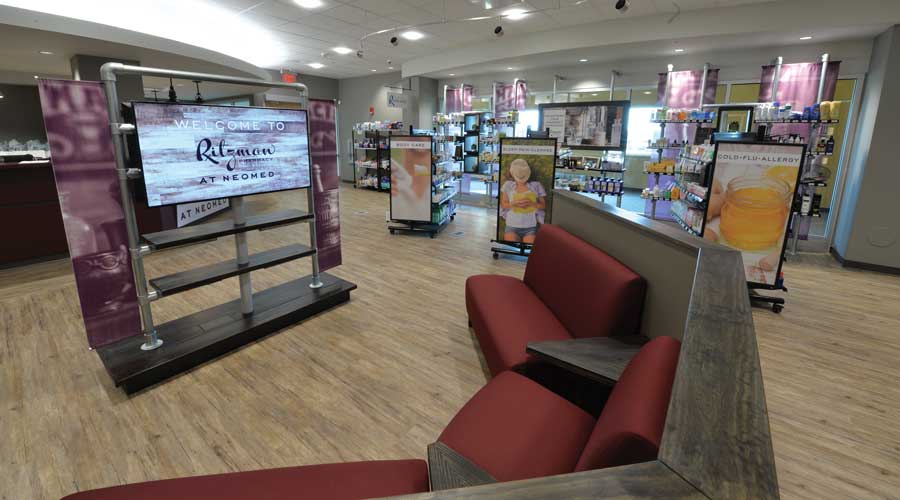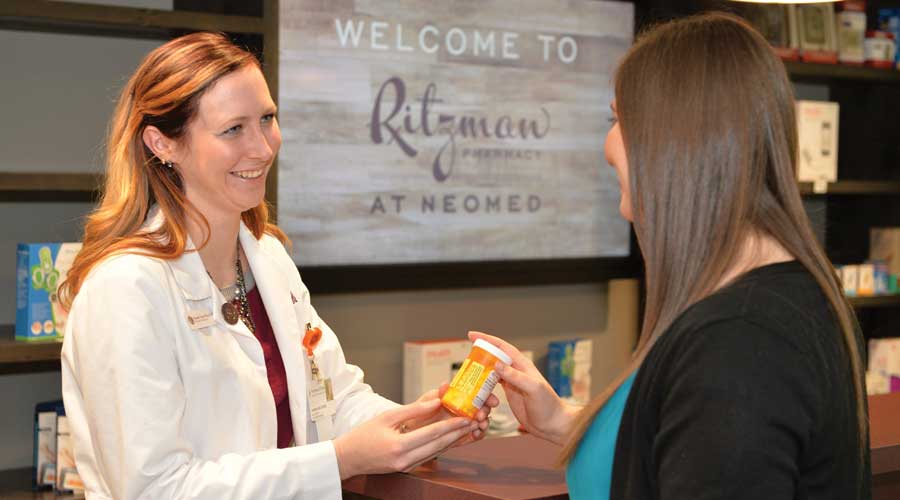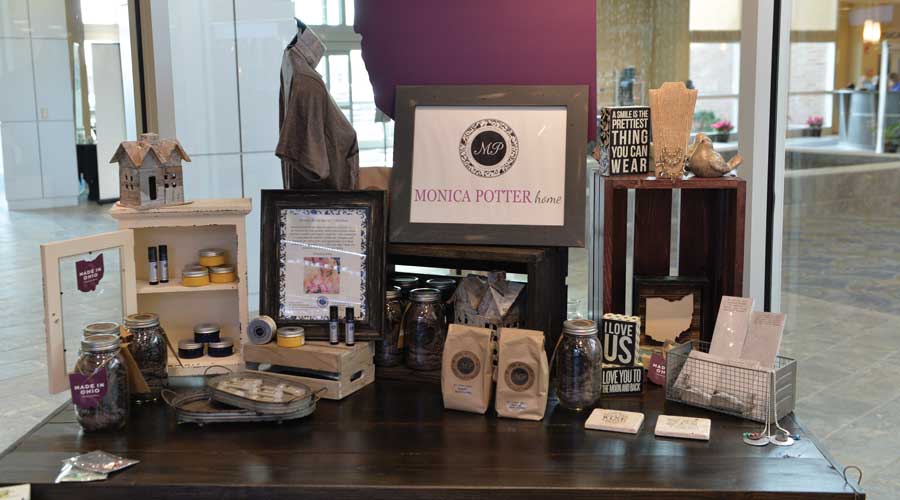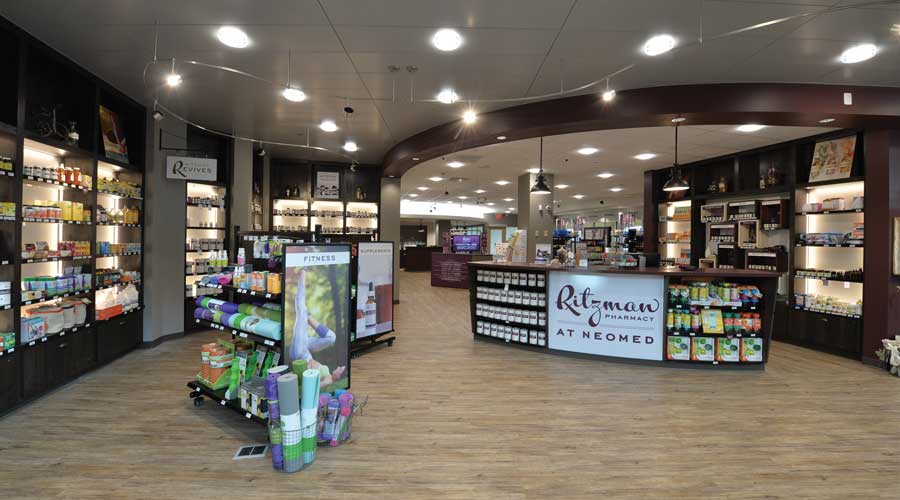When Ritzman Pharmacy decided to create a pharmacy of the future, the pharmacy’s team had a bold vision in mind.
“We want to redefine the experience that people have with their community pharmacy and their pharmacist,” said George Glatcz, COO of Ritzman Pharmacy, an independent community pharmacy chain with 23 locations in northeast Ohio.
“Independent community pharmacy has become extremely commoditized,” which, Glatcz said, is an unsustainable model for independent pharmacies. “We did a lot of research with customers and found that if we don’t change, we won’t likely survive in the next five to 10 years.”
“So, we asked ourselves, ‘How do we differentiate ourselves in the marketplace? What do we do differently?’” he said. “We came up with a strategy that we call pioneering vintage care.”
“It’s very similar to what it was like to practice community pharmacy 25 or 30 years ago,” he said. “We wanted to bring that mentality into the 21st century.”
Glatcz explained that the idea was to restore the pharmacist as a pillar of the community and place him or her at the center of a patient’s care, but to update the model to address modern challenges and adopt the latest technology.
Ritzman Pharmacy partnered with Northeast Ohio Medical University (NEOMED) to implement its strategy to create a pharmacy of the future.
Moving away from commoditization
Glatcz said the decision to reinvent their approach to pharmacy was spurred by the commoditization of independent community pharmacy.
“Over the last 10 years, it’s gotten so commoditized and so competitive, we had to redefine ourselves,” he said.

“With commoditization, pharmacists spend all their time in the production of the prescription.” The pharmacy of the future aims to change that by getting pharmacists out from behind the counter.
“We have our pharmacist out front spending more time with our customers, with our patients, and actually getting out into the community,” Glatcz said. “We designed the pharmacy so that can happen.”
Reinventing the experience
Glatcz said another goal of the redesign was to create an expectation for what patients will experience when they visit a pharmacy. “What we learned from our research is that customers don’t have an expectation for an experience,” he said.
The experience begins the moment a patient walks through the doors of the pharmacy. “At our NEOMED pharmacy of the future, you don’t even know there’s a pharmacy there,” he said. “You don’t see the drugs at all.”

Glatcz said the drug bays are located behind closed doors, so patients can’t see them. Instead, when patients walk in, a pharmacist greets them.
“There’s a pharmacist in front of the practice,” he said. “Our pharmacists usually spend all their time interacting with customers, and very little of their time in the production of the pharmacy.”
Language is also an important component of moving away from commoditization, and creating a quality pharmacy experience.
“We don’t call our pharmacies ‘stores,’” Glatcz said. “We call them ‘practices’ for a reason. We’re creating an environment where health care practice is going to happen.”
In that health care practice, Glatcz said they focus on treating the patient, not on selling commodities. “It’s not a monetized production zone where you can buy tissue and toilet paper,” he said. “It’s a health care environment where people will be treated as a whole person.”
Ecosystems, programs and partnerships
The pharmacy of the future aims to provide patients with a well-rounded approach to health care through internal and external health care ecosystems, Glatcz said. “We’re looking to create that ecosystem where people can come and get complete care,” he said.
This begins inside the pharmacy, which is separated into three programs: Ritzman Revives, Ritzman Restores and Ritzman Remedies.
Ritzman Revives is an area focused on giving patients more energy. “We took a survey of all our customers and the number one complaint they had, whether they were taking a prescription or not, was they all want more energy,” he said. “So, we created that section, and it’s actually taking off and we’re seeing great results from that already.”

Ritzman Restores is focused on the renewal of mind, body and spirit. “It takes the whole person into account,” he said. The section offers essential oils, products made by local artisans and other items that give people a good sense of wellbeing.
Ritzman Remedies features standard front-end items. “We have your typical over-the-counter (OTC) products, but it’s smaller compared to what you would see in a typical pharmacy and it’s really designed to look at things from a different perspective,” Glatcz said.
Providing patients with well-rounded care starts with the pharmacy, but Glatcz said it extends beyond the practice’s walls.
“When you walk into one of our pharmacies, it’s got its own ecosystems, but outside of that, we’re also connected to a health care ecosystem,” he said.
The external ecosystem consists of a variety of partnerships designed to offer patients a well-rounded wellness experience.
Partnerships within NEOMED include close proximity to a physical therapy practice and a heath and wellness facility, so pharmacists can actively engage and screen patients before they begin rehabilitation or work with a physical trainer, Glatcz said. The pharmacy of the future also partners with a patient-centered medical home, and is connected to a primary care office.
“Our pharmacy at NEOMED is sort of a self-contained ecosystem of primary and preventive care, both pre- and post-admission,” he said.
Future outlook
Glatcz said they plan to continue to work to redefine the practice of independent community pharmacy in the future.
“How do we take the concept of the pharmacy of the future and take it one step further?” he said.
Some of the possibilities include expanding into telepharmacy to bring pharmacy into areas that can’t sustain a brick-and-mortar location, and possibly transitioning to an appointment-based model, resembling what other health care professionals use.

Ritzman Pharmacy is also preparing to launch a wellness program to complement its Ritzman Revives energy program, which will include providing patients with a unique biometric analysis that will be reviewed with their pharmacist. The pharmacist will also walk patients through their results, identify areas for concern, make supplement or vitamin recommendations or refer them back to their physician, if necessary. “Then, they come back after six months and they get a re-test to see if they’ve improved,” he said.
Through the program, patients would also receive a small gift bag that includes a hydration tool, an activity tracker and other fitness tools to help patients meet their goals.
These innovations are all part of highlighting the knowledge and skills of the pharmacist. “We want to redefine a pharmacist,” Glatcz said. “They’re not just somebody behind a counter who is counting pills every day.”
Promises to Patients
Ritzman Pharmacy currently has two locations renovated and operating under its pharmacy of the future model, but all of its locations strive to uphold four promises to patients, according to George Glatcz, COO of Ritzman Pharmacy, an independent community pharmacy chain with 23 locations in northeast Ohio.
A place for care beyond the prescription
“We want our pharmacies to be a place where you get care beyond prescriptions,” he said.
A place where everyone is treated as an individual
“Everyone needs to be treated as an individual,” he said. “It’s critical that we know everyone who walks into our pharmacy, and what their health and wellness needs are.”
A place to learn
“We want to be a place to learn,” he said. Along with health and wellness programs, Glatcz said the pharmacy of the future offers a technology bar where people can learn about new technology, such as the latest health care apps. “If you want to play around with health care applications and learn about digital technology in health care, you should come to one of our pharmacies.”
A place to gather
“We want to be a place for people to gather,” he said. “Forty years ago, when they had soda fountains, people used to come and gather at pharmacies because it was a community environment. We’re using that technology bar instead of a soda fountain as a place for people to gather and learn.”












